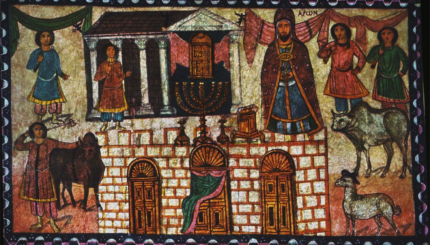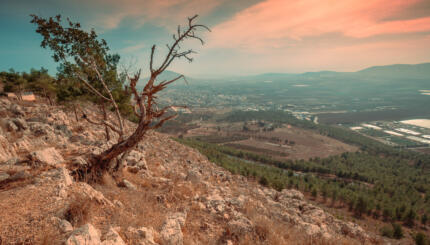Commentary on Parashat Achrei Mot, Leviticus 16:1-18:30
Questions
1. What animal was Aaron commanded to sacrifice as a sin offering, and what were the Israelites commanded to offer?
2. For the burnt offering, Aaron and the Israelites offered the same animal. What was it?
3. Why were lots cast upon the two goats used as the sin offering for the Israelites?
4. What was done with the live goat?

Help us keep Jewish knowledge accessible to millions of people around the world.
Your donation to My Jewish Learning fuels endless journeys of Jewish discovery. With your help, My Jewish Learning can continue to provide nonstop opportunities for learning, connection and growth.
5. God makes it clear to the Children of Israel that they must keep all of His commandments. He then tells them not to follow the evil practices of whom?
6. God delineates certain people whose nakedness it is prohibited to uncover. What does “uncover his or her nakedness” mean?
Answers
1. Aaron was commanded to sacrifice a young bullock. The Israelites were commanded to offer two he-goats (16:3).
2. The burnt offering was a ram (16:3).
3. Lots were cast to determine which goat was for God and which was for Azazel. The one that was for God was sacrificed, the other was kept alive (16:8-10).
4. Aaron was supposed to lay both of his hands on the head of the goat and confess over him all the sins of Israelites; then the goat was taken away to the wilderness and released (16:21).
5. God tells them not to follow the evil practices of the Egyptians and Canaanites (18:3).
6.”Uncovering his or her nakedness” means having sexual relations.
Provided by the Pardes Institute of Jewish Studies, exploring through the original sources.



